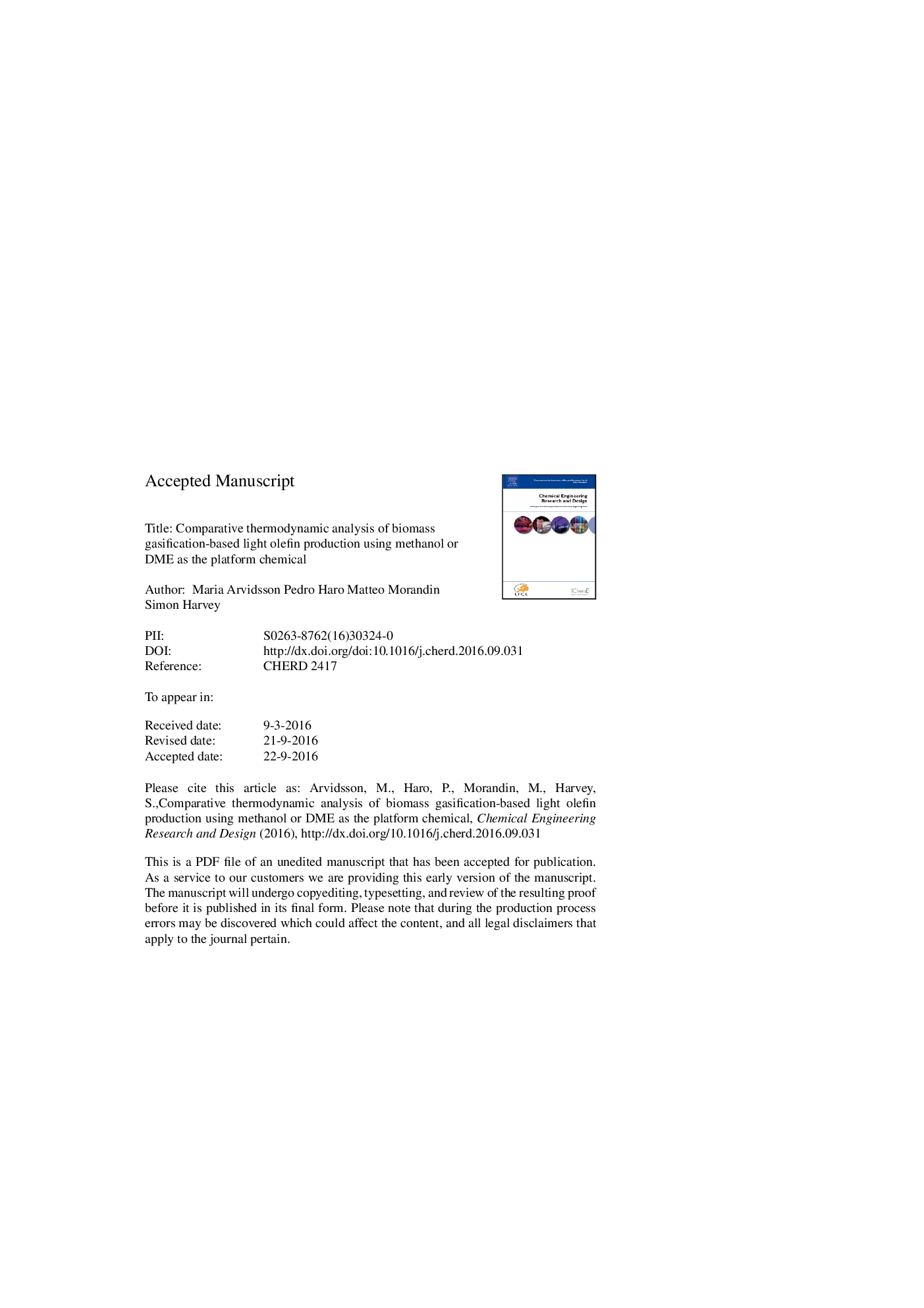| Article ID | Journal | Published Year | Pages | File Type |
|---|---|---|---|---|
| 4987454 | Chemical Engineering Research and Design | 2016 | 44 Pages |
Abstract
This work investigates and compares the thermodynamic performance of alternative platform chemicals for the production of light olefins (i.e., ethylene, propylene, and mixed butylenes) via gasification of lignocellulosic biomass (forest residues). Two concepts based on the same general process layout are considered: (i) via methanol synthesis and methanol-to-olefins (MTO) synthesis; (ii) via direct dimethyl ether (DME) synthesis and DME-to-olefins (DTO) synthesis. The work is based on process models established in Aspen Plus to obtain mass and energy balances. Heat recovery targets for integration of a steam network for combined heat and power production are investigated using pinch analysis tools. The different process alternatives are compared in terms of energy efficiency (ηen). Additionally, to identify key process differences, the cold gas efficiency (ηcg,i) and carbon conversion (Cconv,i) from biomass feedstock to various intermediate products along the process value chain are compared. The results show that light olefins could be produced with an energy efficiency of approximately 52-54% (higher heating value (HHV) basis) using methanol and DME as platform chemicals. The two investigated concepts had similar cold gas efficiency along the process value chain and overall electricity balance. Accordingly, no significant thermodynamic difference could be identified for the two investigated cases. One interesting feature that is identified is that the same amount of the renewable carbon in the feedstock is lost, mainly as CO2, regardless of whether the methanol or DME route is adopted. The difference is where in the process value chain most of the CO2 is formed and removed.
Keywords
DTOMethanol-to-propyleneHHVMTPFCCASUHVCDTGWGSMTGMTOGHGDMELHVlower heating valueLight olefinsPlatform chemicalFluid catalytic crackingWater Gas ShiftFTODimethyl etherBiorefineryFischer TropschMethanolMethanol-to-olefinsMethanol-to-Gasolineair separation unitGreenhouse gasGasificationHigher heating value
Related Topics
Physical Sciences and Engineering
Chemical Engineering
Filtration and Separation
Authors
Maria Arvidsson, Pedro Haro, Matteo Morandin, Simon Harvey,
